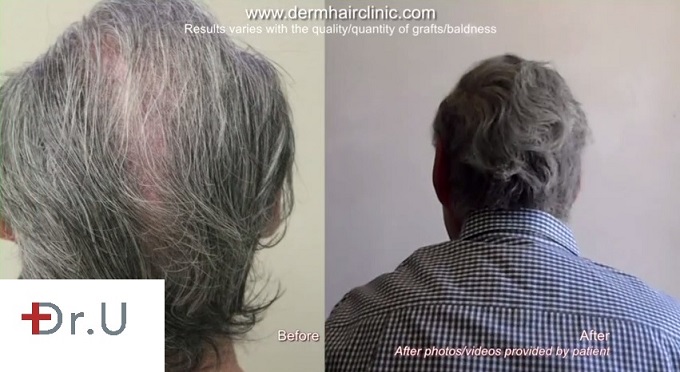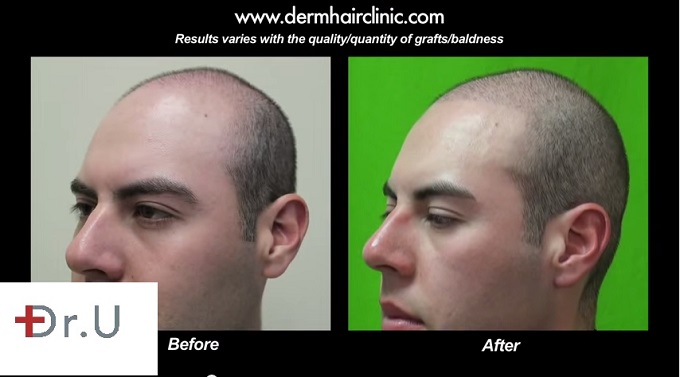The average density of Caucasian males is between 80-90 follicular units per square centimeter. However, in a hair transplantation procedure, there are certain densities which are considered to be safer for follicular survival than others. For this reason, the final outcome will often reflect a smaller percentage of the original density.
Dense packing hair transplantation : Safe Versus At-Risk Hair Transplant Densities
Many surgeons agree that the survival rate of 30-35 follicular units/cm2 would entail a survival rate of about 90%. However, this percentage becomes much lower at 40-50 FU/cm2. Other variables, of course would affect the survival of the grafts. This would include characteristics of the patient as well as the technique and practices used during the procedure.
Some clinics have developed their expertise and techniques to offer densities that are higher than then the low risk range of 30-35 FU/cm2 towards some approximation of the average hair density in men who have not been affected by androgenic alopecia. With higher densities of course, patients are able to attain a fuller looking form of coverage in their final results.

Other Factors Which Affect Hair Density In A Transplantation Surgery
Besides the issue of safety, there are other variables that doctors will consider when determining how many follicular units to insert within a square centimeter area of the scalp.
(1) Patient’s age and the severity of baldness
Younger patients are likely to lose hair at a high rate until their shedding stabilizes. This would mean that they would be encouraged to wait for the appropriate timing to schedule an actual procedure. But aside this, a doctor would also need to plan for the possibility of needing future repair surgeries, in case donors are needed to fill in empty spots which may later emerge. To conserve future grafts, they may decide to choose a conservative density to reserve follicles for future use.

Although body hair transplantation can offer additional donor resources, head hairs are also incorporated to help create a more even looking texture. Therefore, even with the possibility of using hair from the beard, chest etc., it may still be necessary to conserve head donor hairs.
(2) Diameter thickness and curliness of the patient’s natural hair affects attempts at dense packing hair transplantation
Some patients have thicker and/or wavier hair than others.
With thicker hair, fewer grafts per area can be used to achieve fullness compared to individuals who have finer hair.
(3) Ability to insert hairs at a sharper angle also influences the process of dense packing hair transplantation
Depending on the growth angles of hair in specific regions of the head, it may be possible to use much sharper insertion angles for the recipient grafts. This of course would render hair that grows almost parallel to the scalp’s surface. Collectively, the shafts would create the appearance of greater coverage with a smaller density.
How natural this would look relative to the native hairs would determine whether or not this tactic can be used.
Prior to the transplant surgery the surgeon and patient would need to determine objectives and realistic overall expectations which include factors like density.
